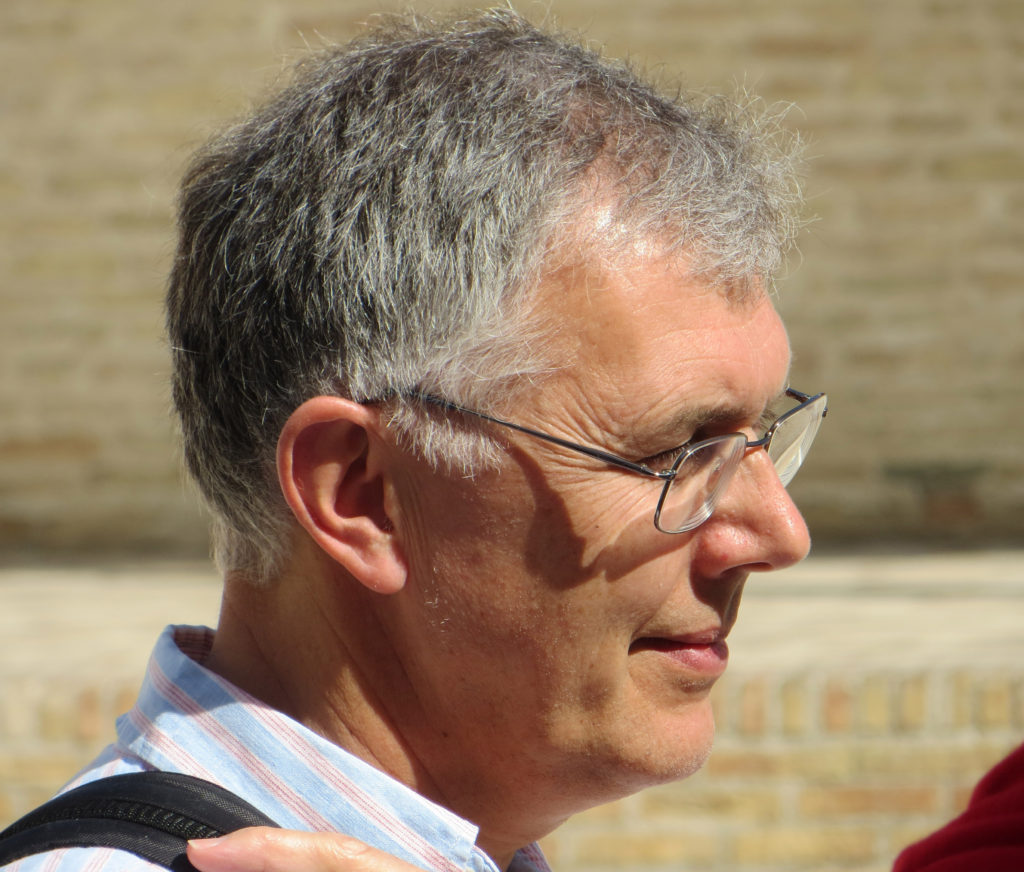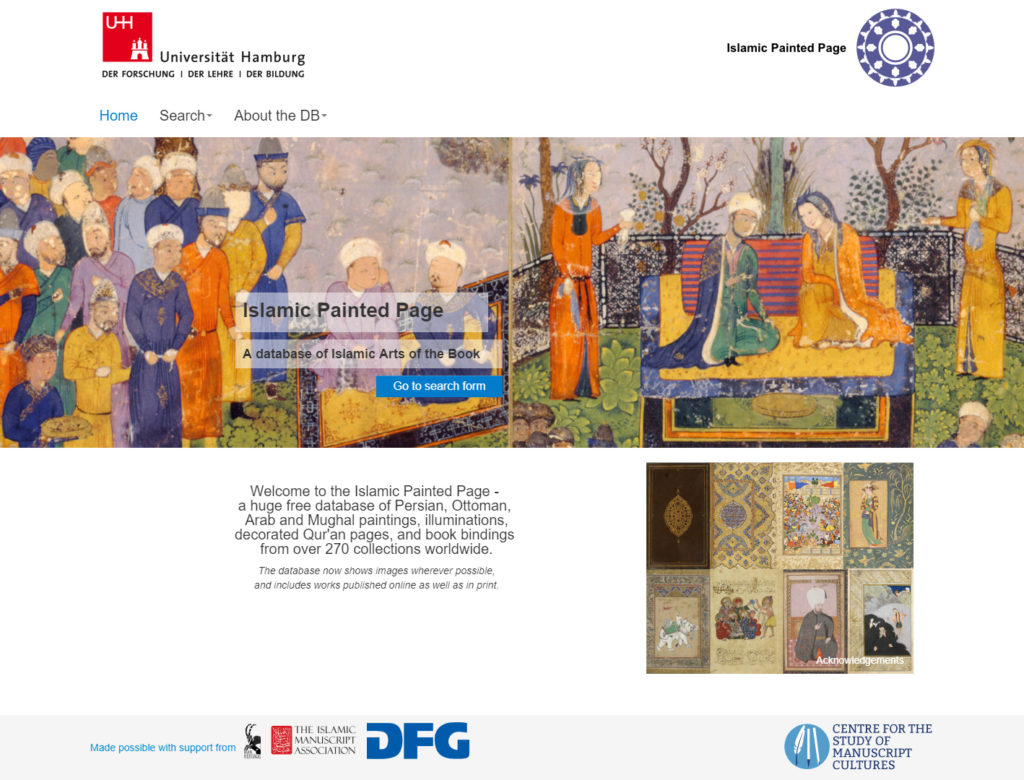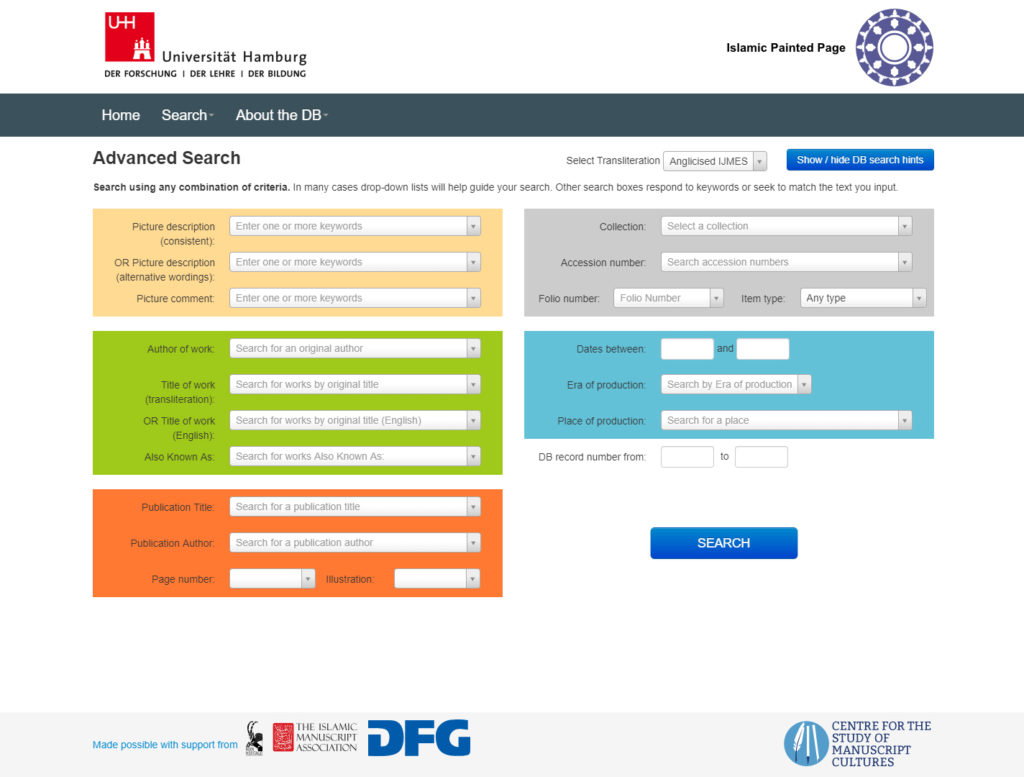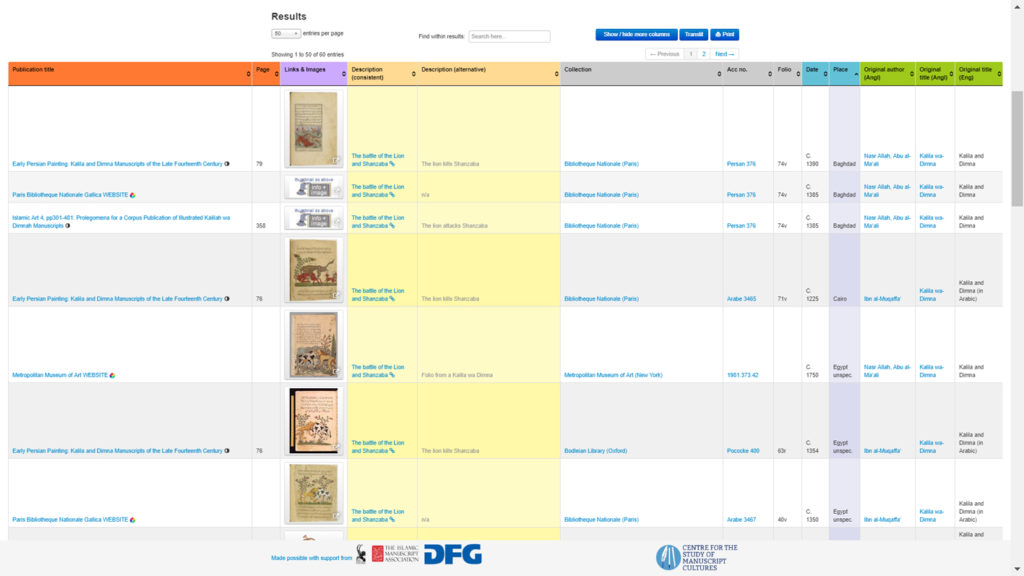The last ten years alone have seen a boom in digital resources for Islamicists and historians of the Middle East. Be it bibliographical tools, like Jara’id, or online photo archives, like Akkasah, the future will only continue to see the expansion of our toolkits, inspiring new research questions in the process. One such tool is the Islamic Painted Page (IPP). In honor of the site’s relaunch this month, we have an interview with its creator, Stephen Serpell.

What is your academic background and how did the Islamic Painted Page (IPP) come about?
I’m originally a scientist – my first degree was Physics at Oxford, but I fell in love with Islamic art about 20 years ago, and I developed a special interest in miniature paintings and the manuscripts in which they are found. This led to some more study with Oxford, and a lot of frustration about the difficulty of locating paintings, images and commentaries. So Islamic Painted Page actually began as a purely private database to help me keep track of what I was looking at; but it soon reached a size where it looked as though it might assist other users, and thanks to the encouragement of Dr. Teresa Fitzherbert, Dr. Barbara Brend, and Professor Charles Melville, it turned into a searchable website with the aid of grants from the Iran Heritage Foundation and The Islamic Manuscript Association.
In a word, can you explain what the IPP is?

IPP is an illustrated online catalogue of 27,000 paintings, illuminations, bindings and decorated Qur’an pages dating from 750 to 1900 CE that have been published in printed secondary sources, plus another 15,000 that have been digitally published on library and museum websites. But since it’s a database, all this is fully searchable and sortable by a whole range of parameters.
What have been the technical hurdles in creating a user-friendly, effective, feature-rich database?
Perhaps the greatest challenge has been enabling users to search by picture description. It’s hard to imagine the database without this facility, but it does require consistent descriptions for each scene. However different authorities give different titles to the same picture, so for example in Kalila wa Dimna “The battle of the Lion and Shanzaba” is also described as “The king of lions attacks Shanzabeh”, and as “The ox killed by the lion”, plus thirteen other variants. So IPP enables users to search using a consistent set of descriptions, but they also have an option to search among all the alternative descriptions if they prefer, while the database discreetly ensures the search results are the same in either case.Users must also be able to search by manuscript author and title, but this too proved complicated because of the range of transliteration schemes that result in different spellings (Shahnama, Shahnameh, Shāhnāmeh…). Again, IPP ended up offering users a choice: either the Anglicised IJMES or Library of Congress systems. However, it also provides tailored links that connect to the Virtual International Authority File (VIAF) database for users who need to check other transliterations.
What are your favorite features of the IPP?

I really like the ability to search by any combination of search parameters. So if, for example, I’m interested in artworks from the Būstān of Saʻdī, but only those made in Iran, and executed between 1500 and 1600, then I can do so in a single search; and the painted works for each of the manuscripts known to IPP will come back listed in their page order, together with images where available.
What are the strengths and weaknesses of the IPP in terms of content?

IPP’s greatest strength is probably its inclusion of items from over 270 different collections, making it possible to do a worldwide search.
At the same time, IPP’s sheer size means it can solve the “needle in a haystack” problem of trying to find specific paintings not only online but (which is harder) within the enormous corpus of texts printed over the last century, right down to page number.
However, IPP only lists artworks published in printed secondary sources or on library and museum websites. This means that it omits many paintings that may be listed (but not illustrated) in collection records; and it can only display images where it can access digitized files, and where copyright permits.
It is also worth stressing that IPP is itself only a secondary source; and for that reason IPP’s search results always signpost users onwards with references and hotlinks to more authoritative sources.

Is it possible for scholars to contribute to the IPP independently?
IPP positively welcomes input – as well as feedback and corrections – from scholars; and the site is more than willing to publish not only references, but also images, if a user can provide them.
So IPP is extremely open to input and collaborative working, although for security reasons users cannot directly load content into the site.
What resources do you need to enrich the IPP, especially from the Muslim world?
At present, the majority of the items listed on IPP come from Western collections, as do most of the images. So we are very enthusiastic to include more content, and images, from the collections of the Muslim world. Most of the publication references in IPP are also Western, so we also want to include more references from secondary sources published in the Muslim World in general.
We would also like to enrich IPP’s coverage of non-figurative artworks – illuminations, book bindings, and the art of the Qur’an; but IPP would really need specialist input to do so.
For example, the database already has about 2,500 references to decorated Qur’an pages, but this is only a fraction of what deserves listing; and the database only gives rather simple descriptions and referencing of these pages, so users cannot yet search by Surah number, calligrapher or script. We plan to rectify this, but IPP would welcome both data and guidance to contribute in the right way.
What is your favorite museum, library, or archive and why?
This is a really tough question! But I have a particular affection for the Keir Collection of Islamic Art, because it’s especially rich in the styles of miniature that I personally like best. It has recently been admirably digitized on the Dallas Museum of Art website.
IPP can’t display images from the Keir Collection at present, but IPP does list all the published items and their web addresses, so images are only one extra click away.
What future developments can we expect to see from the IPP? Where do you want to see IPP in 5 years?
Right now, IPP is one year into an exciting collaboration with the Centre for the Study of Manuscript Cultures of the University of Hamburg. This has already permitted a major upgrade of both the database and the website, and the University of Hamburg is now providing the site hosting. Over time, we hope this collaboration will lead to further growth as well as an increasing professionalization of IPP.
Meanwhile, we are still working on the database to include even more images. The upgraded site is able to display images for artworks from 20 major collections, but we are investigating 15 more and – as I said above – we particularly want to include more from the Muslim world.
As we continue to enlarge the database, I personally hope collection holders may consider actively contacting IPP about making content available; and IPP would also be happy to add relevant content from (review) copies of journals or monographs provided by publishers.
We also want to increase IPP’s geographic scope, especially as regards works from South-East Asia and Africa. For the longer term, we have speculated about making IPP available in other languages, including an Arabic version.
But my main hope is for IPP to develop as an increasingly useful multi-disciplinary resource that not only assists art historians and manuscript scholars, but that also contributes something to digital humanities and wider cultural studies. Islamic art has been an inspiration for me personally, and I would like IPP to share this inspiration.
Contact
Stephen Serpell, M.Sc.
Creator, Islamic Painted Page (IPP)
Research Associate, Centre for the Study of Manuscript Cultures (CSMC), University of Hamburg
stephen.serpell@uni-hamburg.de
(Questions written by Davidson MacLaren, N.A. Mansour, and Stephen Serpell)
